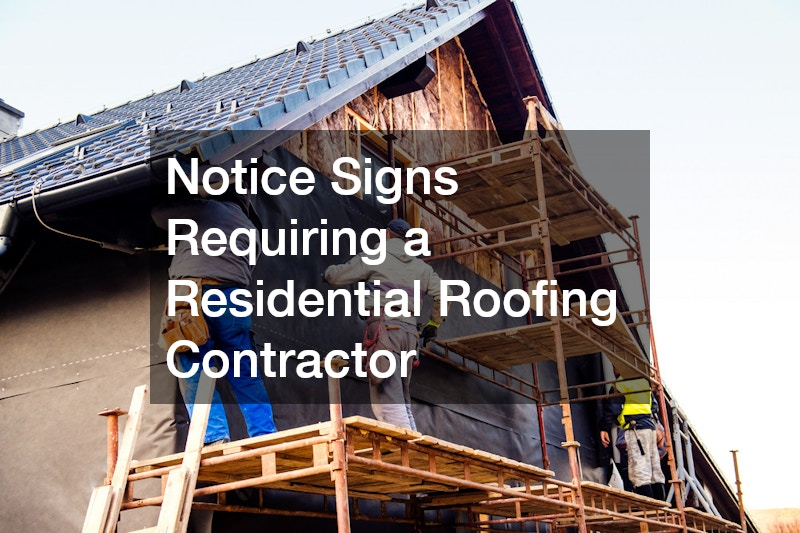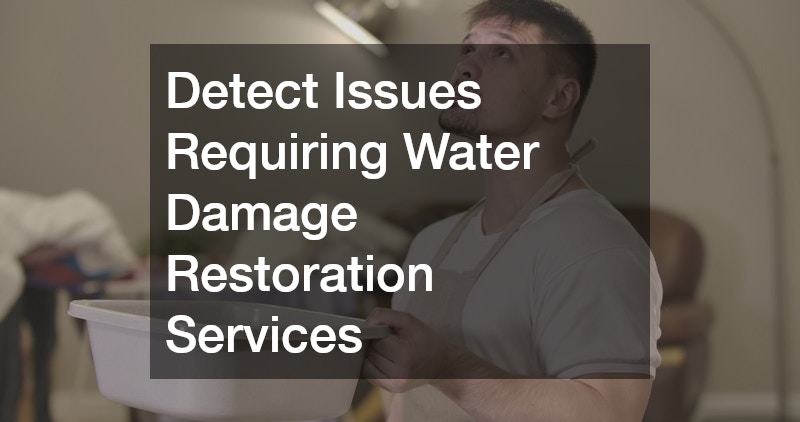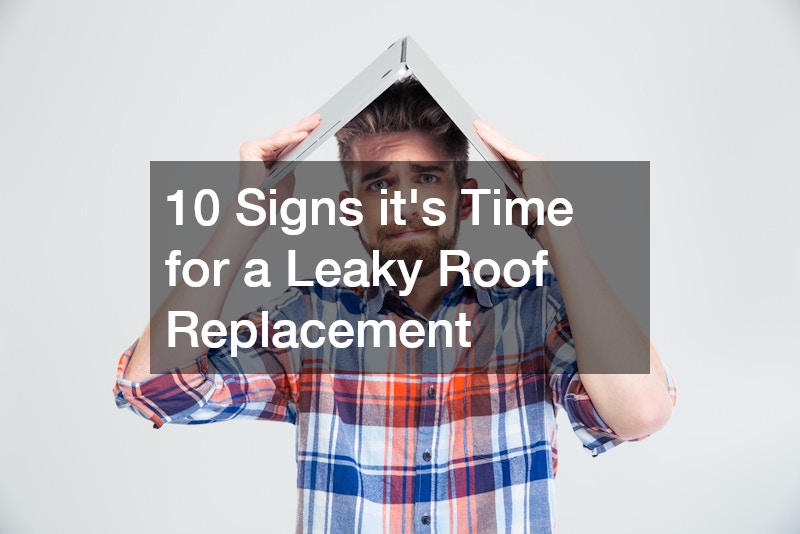
A roof is one of the most critical components of any home, serving as the first line of defense against rain, wind, snow, and sunlight. Beyond protecting the interior, it supports the structural integrity of the house and contributes to overall energy efficiency. Over time, exposure to the elements, seasonal temperature shifts, and debris accumulation can cause wear and deterioration. Recognizing the signs of a failing roof is essential for preventing minor issues from developing into costly damage. Understanding when maintenance, repair, or roof replacement is necessary ensures that homeowners maintain a safe, comfortable, and durable living environment.
Neglecting early warning signs can lead to leaks, mold growth, and damage to walls or flooring, which may require more extensive repairs. Even small water intrusions can compromise insulation and structural framing, ultimately necessitating a roof replacement if left unchecked. By staying vigilant and acting proactively, homeowners can extend the lifespan of their roof, protect their property investment, and avoid emergency situations that disrupt daily life. Timely attention and professional guidance can make the difference between a minor repair and a costly replacement, emphasizing the importance of preventative measures.
In addition to structural concerns, a well-maintained roof contributes significantly to a home’s energy efficiency. Proper ventilation, insulation, and intact roofing materials help regulate indoor temperatures, reducing the strain on heating and cooling systems. This not only lowers utility bills but also creates a more comfortable living environment throughout the year. Homeowners who invest in roof upkeep are not only protecting the building itself but also improving overall household efficiency and comfort.
1. Notice Signs Requiring a Residential Roofing Contractor

Engaging a residential roofing contractor at the first signs of roof distress can save homeowners significant time and money. General indicators include curling or missing shingles, granule loss, and unusual roofline sagging. Even subtle signs like increased energy bills or minor leaks during rainfall should prompt an evaluation. A residential roofing contractor brings professional expertise to identify underlying problems that may not be immediately visible, ensuring that minor issues do not escalate to the point of needing a full roofing replacement.
Specifically, a residential roofing contractor can conduct a detailed inspection to determine the condition of shingles, flashing, and underlayment. They can pinpoint weak areas, identify moisture intrusion, and recommend targeted repairs. By addressing these issues early, homeowners can prevent water damage, structural deterioration, and other costly consequences that might otherwise require a roof replacement. Professional intervention ensures the roof’s integrity while maintaining the home’s aesthetic appeal and value.
2. Identify Trusted Local Roofing Experts
Finding a reputable local roofer is essential for timely repairs and ongoing maintenance. Local professionals are familiar with regional climate conditions, local building codes, and materials that perform best in the area. General signs that indicate the need for a local roofer include leaks after storms, missing or damaged shingles, and sagging spots that threaten structural stability. Prompt evaluation prevents minor problems from escalating, reducing the potential need for roofing replacement.
A local roofer can provide in-depth inspections and recommend preventive measures tailored to the home’s specific needs. They often have access to quality materials and can perform repairs efficiently, minimizing disruption. By addressing issues quickly, a local roofer helps preserve the roof’s integrity and reduces the likelihood of more severe damage that might necessitate a complete roof replacement. Their expertise ensures that repair or replacement solutions are both effective and cost-efficient.
3. Address Situations Demanding Emergency Repairs

Emergency roof repairs are required when immediate action is needed to protect the home. General indicators include sudden leaks, missing shingles following storms, or visible sagging in the roofline. While some minor issues can be deferred, emergencies demand swift professional attention. Acting quickly can prevent water damage, mold growth, and structural compromise, all of which could escalate to the need to replace the full roof.
Emergency roof repairs often involve temporary measures, such as tarping, shingle replacement, or patching leaks. Professionals can evaluate the damage, stabilize the affected areas, and recommend long-term solutions. Early intervention during emergencies reduces the risk of further deterioration and ensures the home remains safe, delaying or preventing the need for a full roof replacement. Prompt attention not only protects the property but also saves homeowners substantial repair costs.
4. Inspect Areas That Require a Gutter Contractor
Properly functioning gutters are critical to maintaining a roof’s health and preventing water damage. General signs that a gutter contractor is needed include overflowing gutters, sagging sections, or standing water near the foundation. Malfunctioning gutters allow water to seep into the roof structure, increasing the risk of leaks, mold, and eventual roof replacement. Routine maintenance and timely repairs by a gutter contractor safeguard both the roof and the home’s structural integrity.
A gutter contractor can clean debris, repair damaged sections, and ensure downspouts efficiently direct water away from the roof. They can also recommend long-term solutions such as seamless gutters to reduce future maintenance. By addressing gutter problems promptly, homeowners prevent water infiltration that could compromise shingles, flashing, and underlayment, ultimately avoiding the need for a replacement. Effective gutter management protects the home while enhancing its value and durability.
5. Detect Issues Requiring Water Damage Restoration Services

Water damage restoration services are essential when leaks or prolonged moisture compromise a home. General signs of water damage include discoloration on ceilings or walls, musty odors, and warped flooring or drywall. Ignoring these warnings can exacerbate damage, sometimes making a replacement necessary. Professional water damage restoration services identify the source of leaks, mitigate further harm, and guide homeowners on the proper steps to protect their home.
Specifically, these services assess hidden mold, inspect insulation, and evaluate the roof and attic structure. Techniques such as drying, dehumidification, and targeted repairs prevent further water intrusion and minimize structural deterioration. Timely intervention not only protects the interior of the home but also reduces the risk of future roofing replacement by addressing underlying issues before they worsen. Restoring water-damaged areas is a crucial component of comprehensive roof maintenance.
In many cases, moisture can infiltrate hidden areas such as attics, crawl spaces, and behind walls, creating conditions that encourage mold and mildew growth. Even minor water accumulation can weaken structural elements over time and compromise indoor air quality. Regularly checking these concealed areas and addressing any signs of moisture promptly helps maintain the overall integrity of the home. Taking proactive steps to manage water exposure also protects furniture, flooring, and personal belongings from long-term damage.
6. Evaluate the Need for a Professional Roofing Company
Hiring a professional roofing company ensures proper maintenance, repairs, and guidance for long-term roof health. General signs that a roofing company should be consulted include widespread shingle damage, persistent leaks, or aging roofing materials. Their expertise prevents small problems from escalating and reduces the likelihood of a full roofing replacement, providing homeowners with peace of mind and preserving property value.
A professional roofing company can perform detailed inspections, identify hidden structural issues, and recommend effective solutions. They manage both minor repairs and large-scale interventions, often completing work more efficiently than individual contractors. By leveraging their resources, homeowners protect their roofs from deterioration, prevent extensive water damage, and delay the need for a roof replacement, ensuring the home remains safe and well-maintained.
7. Determine When a Full Replacement Is Necessary

Knowing the signs that indicate a full roof replacement is essential to protect a home’s integrity. General warning signs include extensive shingle deterioration, persistent leaks, mold or rot, and a roof that has exceeded its typical lifespan. While targeted repairs can address isolated issues, a replacement is often the only viable solution when damage is widespread. Acting promptly prevents further structural problems and preserves the value of the home.
Professionals assess the underlying decking, flashing, and structural supports to determine whether repair or replacement is most appropriate. They guide homeowners in selecting suitable materials and ensuring proper installation. By opting for replacement when needed, homeowners safeguard against further water intrusion, enhance energy efficiency, and maintain long-term durability. Proper timing and professional execution make roofing replacement a sound investment for the home’s future.
In addition to visible damage, homeowners should consider underlying factors such as attic ventilation, insulation quality, and the age of supporting materials. Poor ventilation can cause heat and moisture buildup, leading to accelerated wear of roofing layers and potential structural strain. Likewise, inadequate insulation can exacerbate temperature fluctuations, putting extra stress on the roof system over time. Evaluating these contributing elements helps homeowners make informed decisions about long-term maintenance and ensures that the overall roofing system continues to perform effectively and efficiently.
8. Consult a Siding Replacement Company to Protect Your Roof
Siding plays a critical role in shielding a home from moisture and protecting the roof. General signs that a siding replacement company should be consulted include peeling, cracking, or warped panels that allow water to seep behind walls. Damaged siding can lead to leaks, which may compromise the roof and increase the likelihood of needing replacemen t. Professional assessment ensures that exterior damage is addressed before it escalates.
A siding replacement company can inspect the exterior, replace compromised materials, and recommend durable, weather-resistant options. Coordinating siding repair with roof maintenance prevents water infiltration that could damage roofing materials. Addressing siding concerns early reduces the risk of leaks, preserves the roof’s integrity, and limits the potential need for a roof replacement, maintaining both safety and aesthetic appeal.
9. Schedule Services with a Roofing Service
A trusted roofing service is essential for routine maintenance and timely repairs. General signs to contact a roofing service include missing shingles, leaks, sagging, and other visible damage. Professional roofing services prevent minor problems from worsening, ensuring the roof continues to protect the home effectively and reducing the likelihood of needing a full roof replacement.
A roofing service can perform detailed inspections, identify vulnerable areas, and implement preventive solutions tailored to the roof’s age and materials. They address small leaks before they develop into larger issues, preserving structural integrity. By scheduling regular maintenance and repairs with a professional roofing service, homeowners minimize the risk of extensive damage and the need for replacing the roof, extending the roof’s lifespan and safeguarding their investment. Routine inspections also provide an opportunity to address small issues before they affect other parts of the home. For example, checking flashing, vents, and seals can prevent water from seeping into walls or ceilings, reducing the risk of mold and structural weakening.
10. Install Seamless Gutters to Protect Your Roof
Seamless gutters provide essential protection by directing water away from the roof and foundation. General signs that seamless gutters are necessary include overflowing water, leaks at joints, and sagging sections. Proper installation prevents water damage to shingles, flashing, and underlayment, reducing the risk of a roof replacement. They are durable, low-maintenance, and highly effective at preventing costly water-related issues.
A professional seamless gutter installation ensures proper slope, secure attachment, and optimal water flow. By minimizing leaks and debris accumulation, seamless gutters prevent water infiltration along the roofline, protecting the home from moisture-related damage. This proactive approach extends the roof’s life, reduces repair costs, and helps delay or avoid a full replacement, maintaining the home’s structural integrity and appearance.
Maintaining a roof is a critical responsibility for homeowners, and early detection of damage can prevent costly repairs or emergencies. Leaks, missing shingles, water infiltration, and deteriorating siding all indicate the need for professional intervention. Engaging experienced professionals, whether a residential roofing contractor, local roofer, or gutter specialist, ensures repairs and preventive measures are executed correctly and efficiently.
A roof replacement is sometimes unavoidable, but timely inspections and maintenance reduce the frequency and severity of replacements. Coordinating repairs, maintenance, and replacement with skilled experts helps prevent water damage, structural issues, and financial strain. By acting proactively and relying on professional guidance, homeowners preserve the roof’s durability, maintain the home’s value, and ensure safety and comfort for years to come.
Beyond protecting the structure, maintaining the roof enhances the home’s curb appeal and aesthetic value. A clean, well-kept roof creates a positive impression, complements landscaping and exterior design, and can influence property value when selling. Taking steps to maintain a visually appealing and structurally sound roof ensures the home is not only safe but also attractive and inviting.




